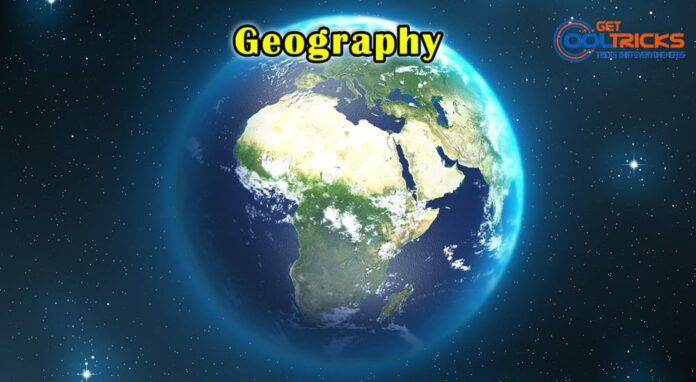- Continental Drift theory was put forth by Alfred Wegener, a German meteorologist, polar explorer, astronomer, and geologist. He is in fact known as the father of continental drift.
- In a lecture in 1912, Wegener proposed a startling theory of ‘continental drift’.
- The movement of continents across the ocean bed is known as continental drift. This drifting takes millions of years to complete this process.
- Till 1960 only.
Various Stages of Continental Drift Theory
- The first stage occurred during the Carboniferous period, when Pangea, a supercontinent, was encircled by Panthalassa, a mega-ocean.
- In the second stages around 200 million years ago in the Jurassic period, the supercontinent, Pangaea, began to split. Pangaea first broke into large continental masses as Laurasia and Gondwanaland forming the northern and southern components respectively.
- In the third stages, the Tethys Sea progressively filled the area between Laurasia and Gondwanaland during the Mesozoic epoch, and it gradually broadened.
- In the fourth stage around 100 million years ago when North and South America drifted westward, resulting in the emergence of the Atlantic Ocean. The Rockies and Andes were formed by the westward drift of North and South America.
- The Orogenetic Stage in which mountain-building activity took place is the fifth stage.
Forces responsible for Continental Drift
There are two factors which are responsible for continental drift which are as follows:
- The continental drift was equatorward due to the combined action of gravitational forces, pole-fleeing force, and buoyancy force because the planet is not perfectly round and has a bulge at the equator.
- Note: The ‘pole-fleeing force’ is caused by an increase in centrifugal force from the poles towards the equator.
- The continental drift was westward due to tidal currents caused by the earth’s rotation.
- However, these two factors were eventually discovered to be insufficient reasons for continent drifting, which is considered a criticism of Wegener’s theory.
Evidence in support of Continental Drift
Fitting of Continent
- The bulge of Brazil (South America) seems to fit into the Gulf of Guinea (Africa).
- Greenland seems to fit in well with Ellesmere and Baffin islands of Canada.
- The west coast of India, Madagascar and Africa seem to have been joined.
- North and South America on one side and Africa and Europe on the other fit along the mid-Atlantic ridge.
- The Caledonian and Hercynian mountains of Europe and the Appalachians of USA seem to be one continuous series.
Criticism
- Coastlines are a temporary feature and are liable to change.
- Several other combinations of fitting in of unrelated landforms could be attempted.
- Continental Drift Theory shifts India’s position too much to the south, distorting its relationship with the Mediterranean Sea and the Alps.
- The mountains do not always exhibit geological affinity.
Causes of Drift
- The gravity of the earth, the buoyancy of the seas and the tidal currents were given as the main factors causing the drift, by Wegener.
Criticism
- This is illogical because for these factors to be able to cause a drift of such a magnitude, they will have to be millions of times stronger.
Polar wandering (Shifting of Poles)
- The position of the poles constantly drifted (due to plate tectonics).
Criticism
- Poles may have shifted, not necessarily the continents.
Botanical Evidence
- Presence of glossopteris vegetation in Carboniferous rocks of India, Australia, South Africa, Falkland Islands (Overseas territory of UK), Antarctica, etc. (all split from the same landmass called Gondwana) can be explained from the fact that parts were linked in the past.
Criticism
- Similar vegetation is found in unrelated parts of the world like Afghanistan, Iran and Siberia.
Distribution of Fossils
- The observations that Lemurs occur in India, Madagascar and Africa led some to consider a contiguous landmass “Lemuria” linking these three landmasses.
- Mesosaurus was a small reptile adapted to shallow brackish water. The skeletons of these are found only in South Africa and Brazil. The two localities presently are 4,800 km apart with an ocean in between them.
Rocks of Same Age Across the Oceans
- The belt of ancient rocks of 2,000 million years from Brazil coast matches with those from western Africa.
Criticism
- Rocks of the same age and similar characteristics are found in other parts of the world too.
Tillite deposits
- Tillite deposits are sedimentary rocks formed out of deposits of glaciers.
- The Gondwana system of sediments are found in India, Africa, Falkland Island, Madagascar, Antarctica and Australia (all were previously part of Gondwana).
- Overall resemblance demonstrates that these landmasses had remarkably similar histories.
Placer Deposits
- Rich placer deposits of gold are found on the Ghana coast (West Africa) but the source (gold-bearing veins) are in Brazil, and it is obvious that the gold deposits of Ghana are derived from the Brazil plateau when the two continents lay side by side.
Drawbacks of Continental Drift Theory
- Wegener failed to explain why the drift began only in Mesozoic era and not before.
- The theory doesn’t consider oceans.
- Proofs heavily depend on assumptions that are generalistic.
- Forces like buoyancy, tidal currents and gravity are too weak to be able to move continents.
- Modern theories (Plate Tectonics) accept the existence of Pangaea and related landmasses but give a very different explanation to the causes of drift.
- Till 1960 only this theory, after that Plate Theory.


